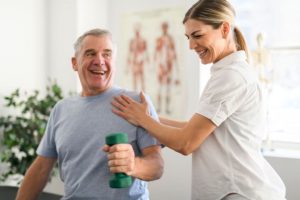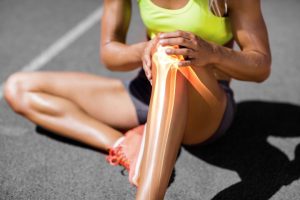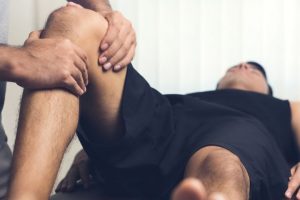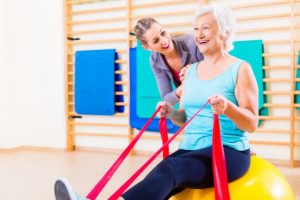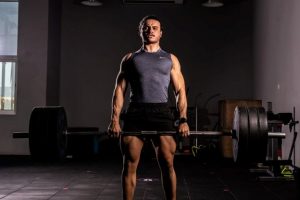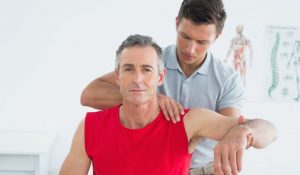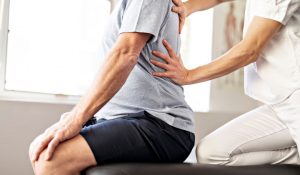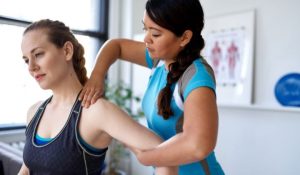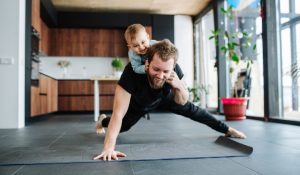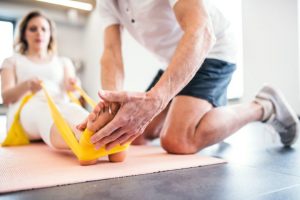At about this time in your isolation, you’re probably a little upset at yourself and how far you’ve come from your pre-quarantine body. Much like we see when sending our kids off to college and gain their “Freshman Fifteen” I’m sure there are a few people that are close to their “Quarantine Fifteen” and need some encouragement to get moving. This article is designed to give some inspiration to those out there who don’t have much equipment at their disposal, and don’t want to do an endless number of push-ups, chin-ups, or sit-ups at home.
Many people who have set themselves up to work from home to help with social distancing are still working long hours and don’t have a lot of opportunity for exercise. In fact, many of the exercises built-in to our day such as walking to and from work, using stairs, etc. are not being utilized. This means we must be more diligent with making a sincere effort during the day to get increase our heart rate, improve flexibility, and improve focus. In fact, it has been well-researched that a round of acute exercise can help improve focus for up to 2 hours afterward and is just as beneficial for adults as it is for adolescents!
Here are some simple exercises to help make your day more interesting and encourage you to begin moving muscles you may have forgotten how to use. We have split these sections into an Upper Body and Lower Body designation, but that doesn’t mean you need to do one or the other. You may try and do the Upper Body in the Morning and Lower Body in the evening, or if you’re not quite at that level of conditioning, split them into alternating days.
No Equipment Upper Body Exercises
Shoulder Burners – This is a series of exercises that are intended to be done one right after the other. It may initially look confusing, but once you’ve done it a few times, you start to recognize the pattern. This is a great exercise for warming up the shoulders and upper back – a great exercise before sitting at the computer!
Forward Lifts – Lift your arms forward (thumbs up) to shoulder height. 10x
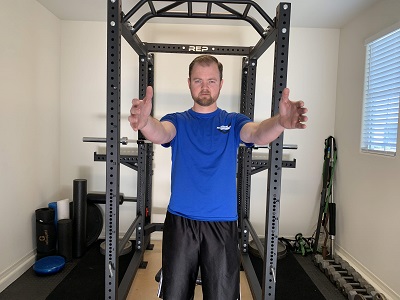
Scaption Lifts – More your arms slightly out from the forward lift (still thumbs up) and up to shoulder height. 10x
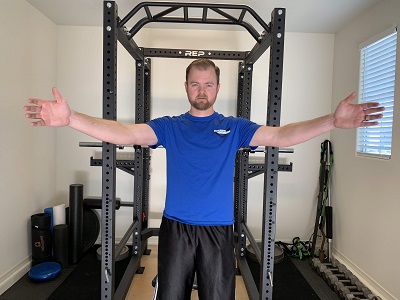
Abduction – Raise your arms up to your side (thumbs up) and up to shoulder height.
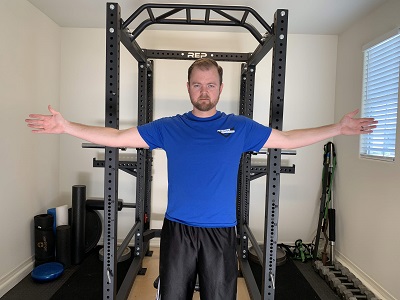
Abduction (Palms Down) – Repeat the same motion but your palms should be facing the ground at the peak of the movement. 10x
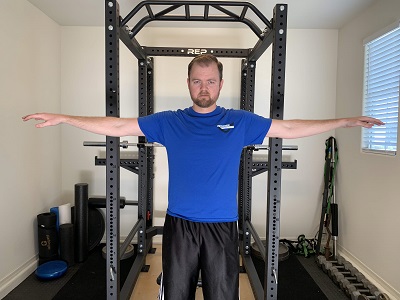
Horizontal Adduction (Palms Down) – Keeping your palms down, move your arms forward like you’re moving them across a tabletop. 10x
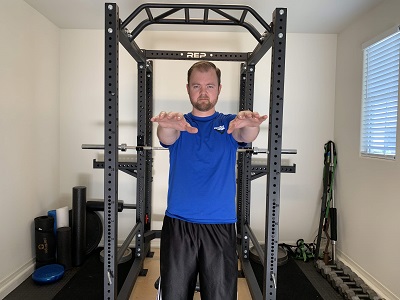
Horizontal Adduction (Palms Down to Palms Up) – Do the same shoulder movement but start palms down and end palms up. 10x
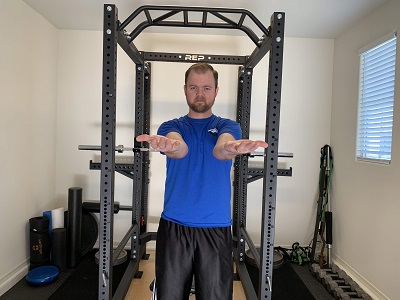
Horizontal Adduction (Palms Up) – Do the same shoulder movement but keep palms up through the movement. 10x
Horizontal Adduction (Palms Up to Palms Down) – Do the same shoulder movement but start palms up and end palms down. 10x
Shoulder Circles – Perform small, controlled circles in both directions, forward 10x and backward 10x.
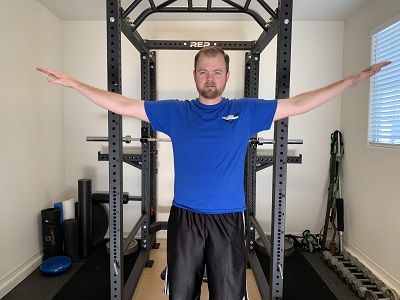
Elbow to ceiling – Bending slightly forward at the waist, pull your elbows backward and reach as far towards the ceiling as you can. 10x
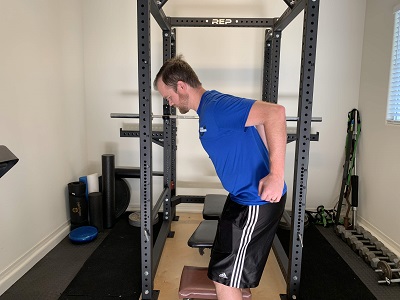
Reach to back wall – Keeping bent forward at the waist, reach towards the back wall, stretching with your fingertips. 10x
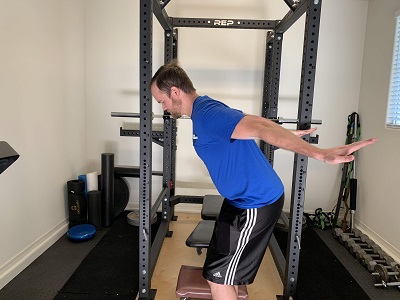
Lying on your back:
Shoulder Scissors – Keeping your knees bent and low back flat against the floor, raise one arm overhead as far as you can and bring the other arm towards your feet as far as you can. Alternate. 20x
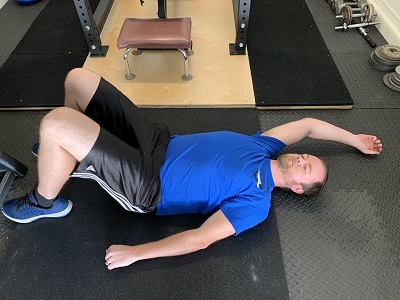
Shoulder Claps – Start with both arms outstretched to your sides at 3 o’clock and 9 o’clock. Raise both arms up to perform a “clap” and repeat 20x
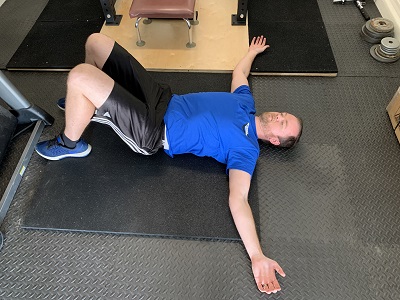
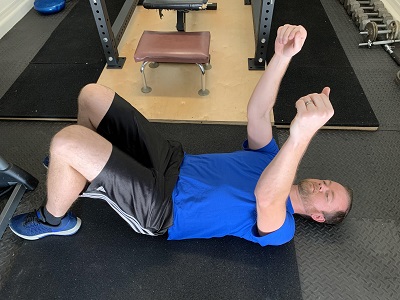
Shoulder angels – Start with arms in a “field goal” position (picture a referee giving a touchdown signal). Raise both arms simultaneously overhead, then return to the starting position. Repeat 20x
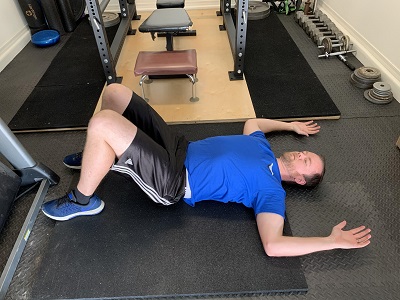
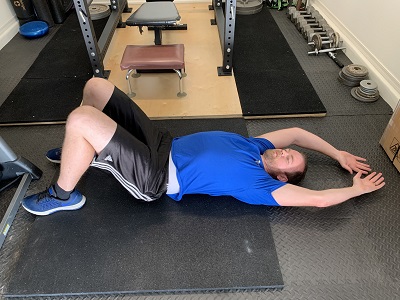
Shoulder Punches – Keeping your arms completely straight, raise your arms out in front of you, then reach towards the ceiling to lift the shoulder blade off of the ground. Bring the shoulder blade back to the ground and making sure the elbow does not bend.
While lying on your stomach:
Swimmer’s Shoulders – Find two items that you can lift your arms over. Place the items at 2 o’clock and 4 o’clock. Start with your arms at your sides and lift your arm up and over the first obstacle and land. Then over the second obstacle and land. To make sure you are utilizing your shoulder, roll a towel up and place it at your forehead. Do not lift your head from the towel.
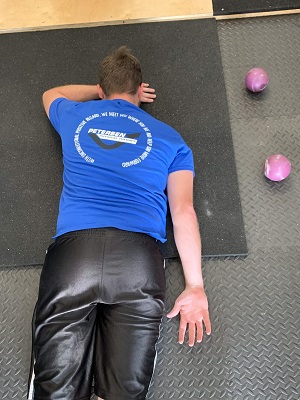
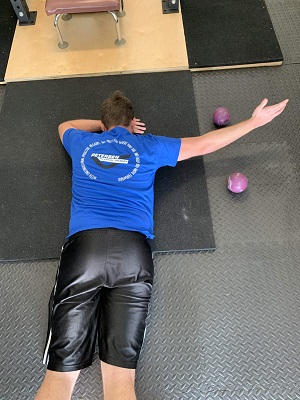
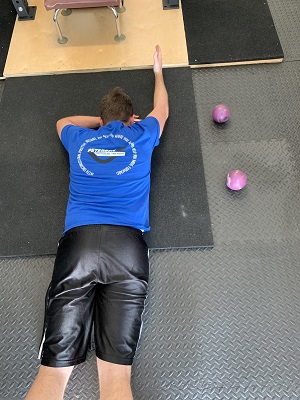
No Equipment Lower Body Exercises
High Knees – Start in a standing position and raise your right knee up to your right hand. Quickly do the other side. Perform continuously for 30 seconds.
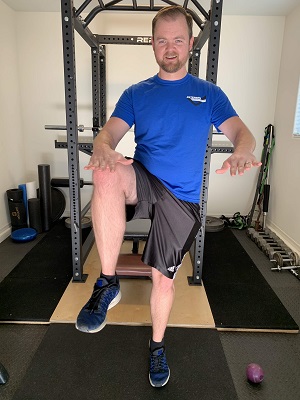
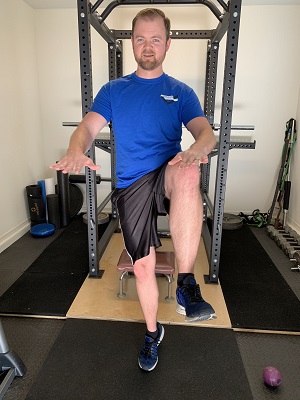
Cat + Cow – Start on your hands and knees, aligning your wrists underneath your shoulders and your knees underneath your hips. Tip your pelvis forward, tucking your tailbone and looking at your belly button. Now tilt your pelvis backward, sticking your tailbone up and looking upward. Hold each position for 5 seconds and repeat 10x.
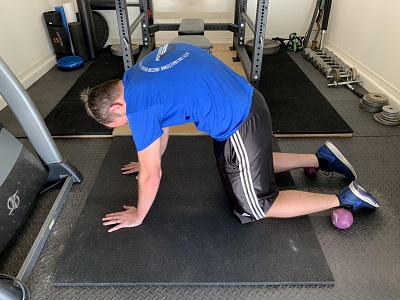
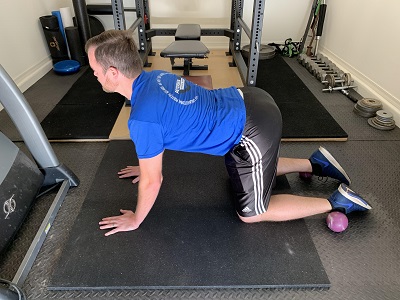
Bird Dog – Start on all fours with your hands under the shoulders and your knees under the hips. Keeping your back and pelvis still and stable, reach your right arm forward and left leg back. Bring your right arm and left leg back together so they touch. Repeat 10x then switch sides.
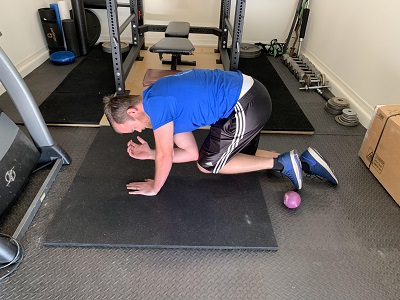
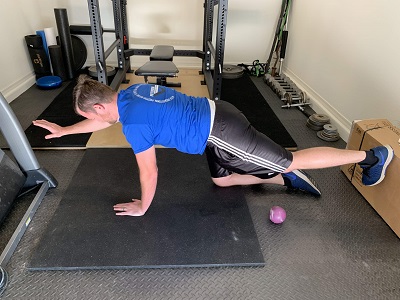
Thoracic Rotations – Start on all fours with your hands under the shoulders and your knees under the hips. Reach one hand up behind your head, then rotate your body reaching the elbow as high as you can towards the ceiling. Hold 1-2 seconds before rotating as far as you can in the other direction.
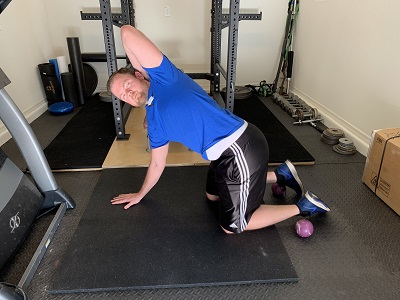

Single Leg Romanian Deadlift (RDL) – Stand on one leg. Once you have your balance, reach down towards the floor while hinging at your hips and keeping your knee slightly bent. Return to standing. Repeat 10x each side. If you cannot keep your balance, do this with a chair in front of you and reach forward to the chair.
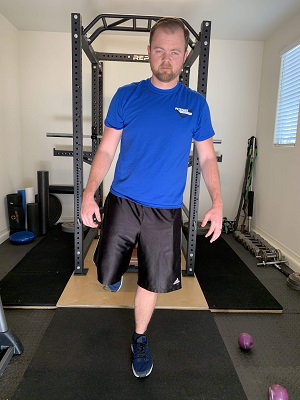
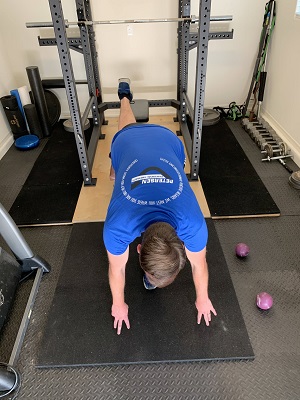
Paused Squats – Keep your feet shoulder width apart and drop your bottom down as far as you feel comfortable. Once you reach the bottom of the squat, try and hold for 5 seconds. Return to standing. Repeat 5x.
Lateral Squats – Start in a standing position and take a step sideways, then squat towards the side you lean. Return to standing and then attempt on the other side.
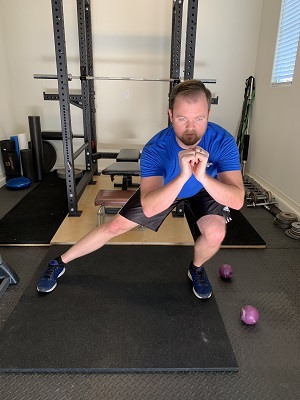
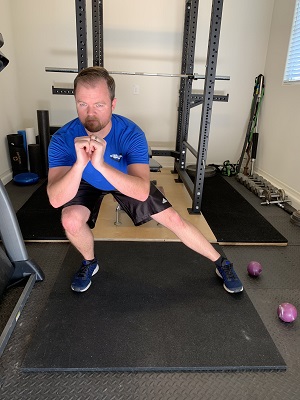
Hamstring/Straight Leg Raise Combination – This is a nice “cooldown” stretching exercise. Stretch the hamstring by putting it up against a post. A door frame works well for this exercise. Keep one leg up to be stretched the entire time, and raise the other leg up and down 30 times.
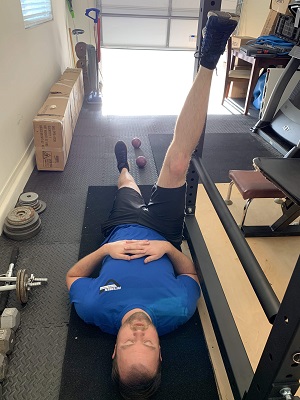
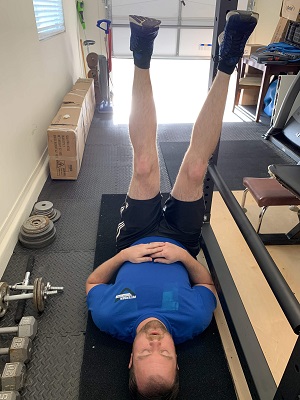
References
- Basso, J., Shang, A., Elman, M., Karmouta, R., & Suzuki, W. (2015). Acute Exercise Improves Prefrontal Cortex but not Hippocampal Function in Healthy Adults. Journal of the International Neuropsychological Society, 21(10), 791-801. doi:10.1017/S135561771500106X
- Budde, H., Voelcker-Rehage, C., Pietraßyk-Kendziorra, S., Ribeiro, P., & Tidow, G. (2008). Acute coordinative exercise improves attentional performance in adolescents. Neuroscience Letters, 441(2), 219–223. doi: 10.1016/j.neulet.2008.06.024


